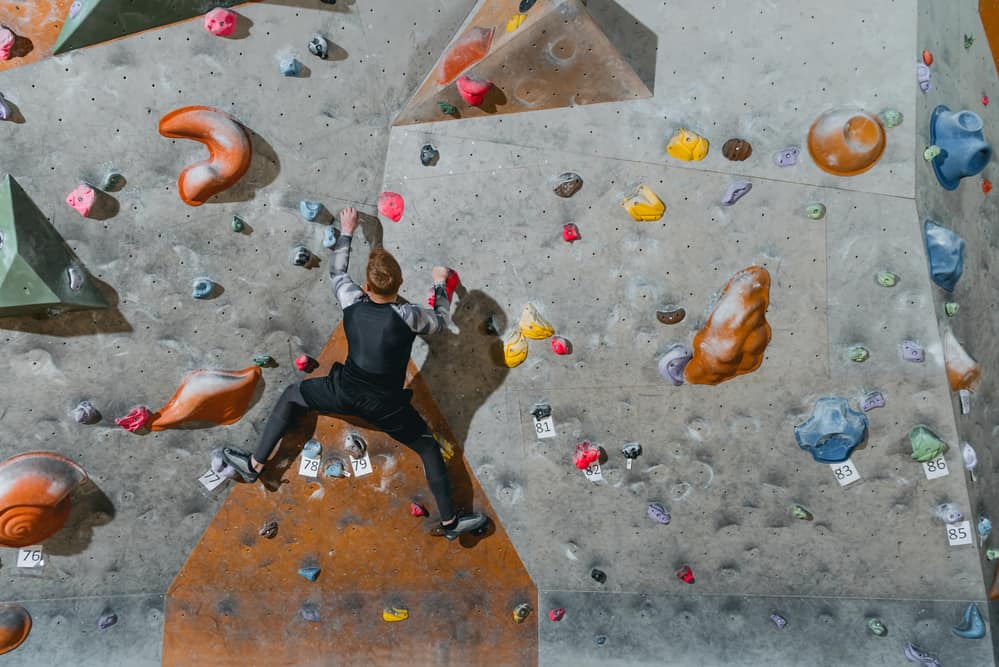Is Indoor Climbing Easier Many climbers prefer to climb outdoors, where they can enjoy the natural scenery and challenges of climbing on rocks and boulders. However, indoor climbing can be a great way to stay in shape and improve your climbing skills. So which is more accessible, indoor or outdoor climbing?
There is no easy answer to this question. Indoor climbing can be easier since the routes are typically pre-set, and there is less chance of getting lost or injured. However, outdoor climbing can be more challenging and rewarding, as you are climbing on natural features rather than artificial walls. Ultimately, it depends on your skills and preferences.

Table of Contents
What Is the Easiest Type of Climbing?
One of the main benefits of outdoor climbing is that it allows you to connect with nature. You can enjoy the scenery while getting a workout, and there’s something about being in the great outdoors that makes physical activity more enjoyable. Outdoor climbing can also be a social activity, as you can join or organize group climbs.

While outdoor climbing has many benefits, it can also be challenging. You need to be physically fit to do it, and you need to have some basic knowledge of climbing techniques. If you’re not experienced, you may also need to take a course or hire a guide. Additionally, outdoor climbs can be dangerous if you’re not careful. There are risks like avalanches, rock falls, and injuries from falls.
Indoor climbing is often seen as a more accessible option than outdoor climbing. It’s less risky and doesn’t require as much fitness or experience. Additionally, more indoor climbing options are available than outdoor climbs – you can find an indoor climbing gym in most large cities.
How Do Solo Climbers Get Down?

Indoor climbing is often seen as more accessible than outdoor climbing because the routes are pre-set, and there is usually a safety rope. However, indoor climbing can still be dangerous if you don’t take proper precautions. It’s essential to learn how to safely get down from a climb, regardless of whether you’re doing it indoors or outdoors.
The most popular methods are rappelling and downclimbing.
Rappelling is the process of descending a rope anchored at the top of the climb. This is typically done with the help of a partner, but it is possible to do it alone if you have the proper equipment. Rappelling is generally considered to be the safest method of getting down a climb, but it can be dangerous if you don’t know what you’re doing.
Downclimbing is precisely what it sounds like – climbing back down the route you came up with. This can be more difficult than it sounds, especially if the course is overhanging or there are no good holds to grab onto. Downclimbing is usually only attempted by experienced climbers comfortable with the risks involved.
What Should I Wear to Rock Climbing Indoors?

Before heading to the climbing gym, consider a few things. Dress is crucial. There are several factors to consider when deciding what to wear for indoor rock climbing.
The climate of the gym is one crucial consideration. If the gym is hot, you’ll want to choose clothing that will keep you cool. Synthetic fabrics such as polyester or nylon wick moisture away from your skin, which can help keep you cool and comfortable. You’ll also want to consider the climbing you’ll be doing. If you are doing a lot of bouldering, you’ll want clothes that won’t restrict your movement.
Another important factor is comfort. You’ll spend a lot of time in your climbing clothes, so they must be comfortable and fit well. Clothes that are too tight or loose can be uncomfortable and lead to safety hazards. Choosing durable garments that will hold up against abrasions from the rock walls is also essential.
Is Indoor Rock Climbing Scary?
The importance of indoor rock climbing is that it can be just as scary as outdoor rock climbing. You’ll need to consider the same factors: the climate of the gym, your comfort level, and what type of climbing you’ll be doing. Plenty of great options for clothes and gear will help make your climb more enjoyable and safe.

Consider a few things before indoor rock climbing. First, choose your climbing style. Sport, trad, and bouldering are types of rock climbing. Each has unique challenges. Consider the gym’s atmosphere. Rock gyms can be hot, cold, or warm. Dress for the weather. Finally, consider comfort. Are you tall? Do you mind crowds? Indoor rock climbing is a great way to try something new if you’re comfortable with it.
What Are the Grades of Rock Climbing?

If you want to start rock climbing, you should know the grades. Each grade has a different level of risk and difficulty, so choose wisely. Beginners should start with a lower rate, while experts can climb higher. Before climbing, know the conditions. Some climbs are more accessible in the summer and others in the winter. You should see the rock climbing grades as a beginner or an expert.
Many rock climbing grading systems follow a similar format. Yosemite Decimal System rates range from 5.0 to 5.15. 5.0 to 5.9 is easy, 5.10 to 5.12 is moderate, and 5.13 to 5.15 is difficult. There are also the French and British E1-E9 rating systems. Before a climb, know what each grade means.


